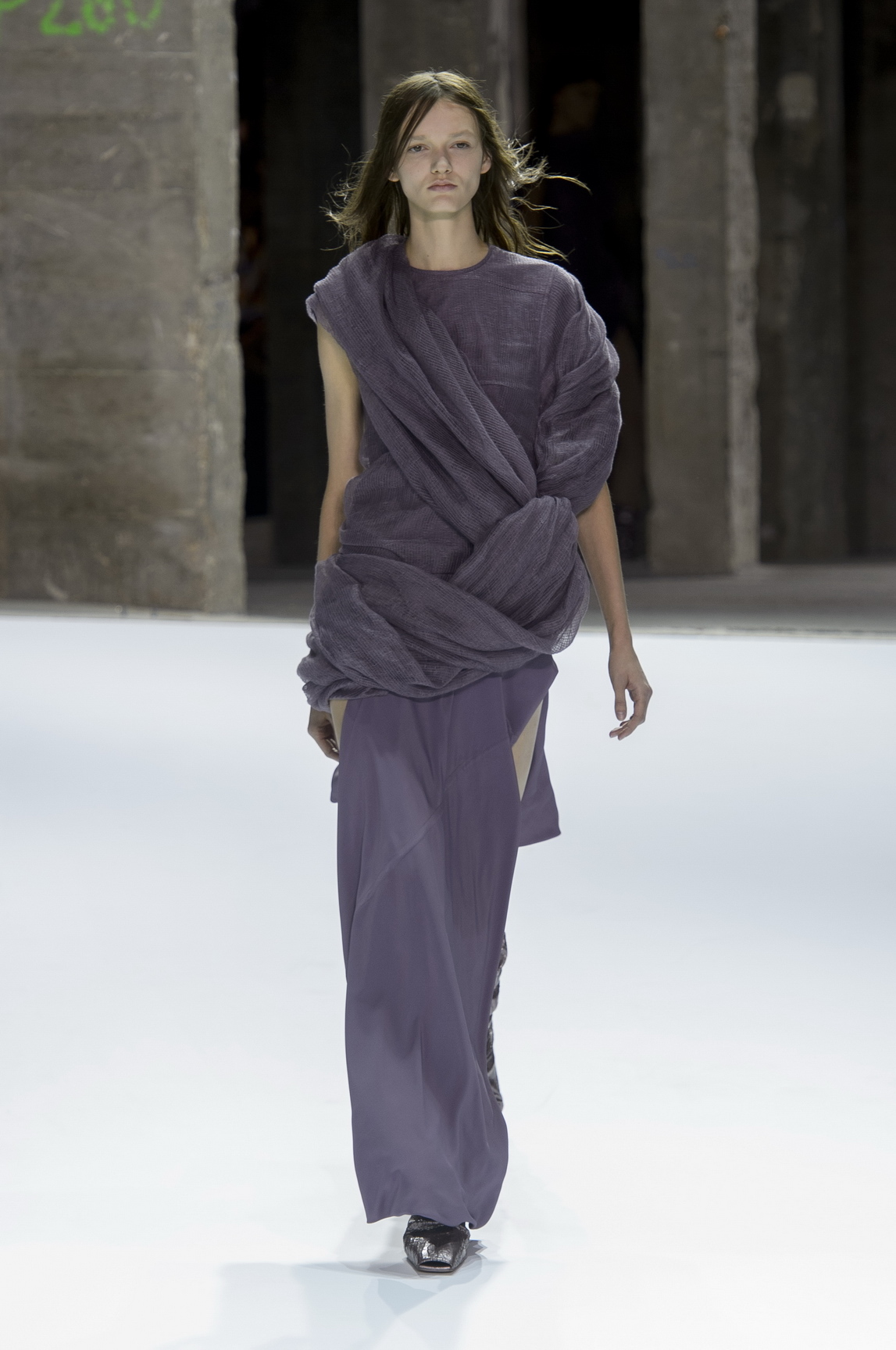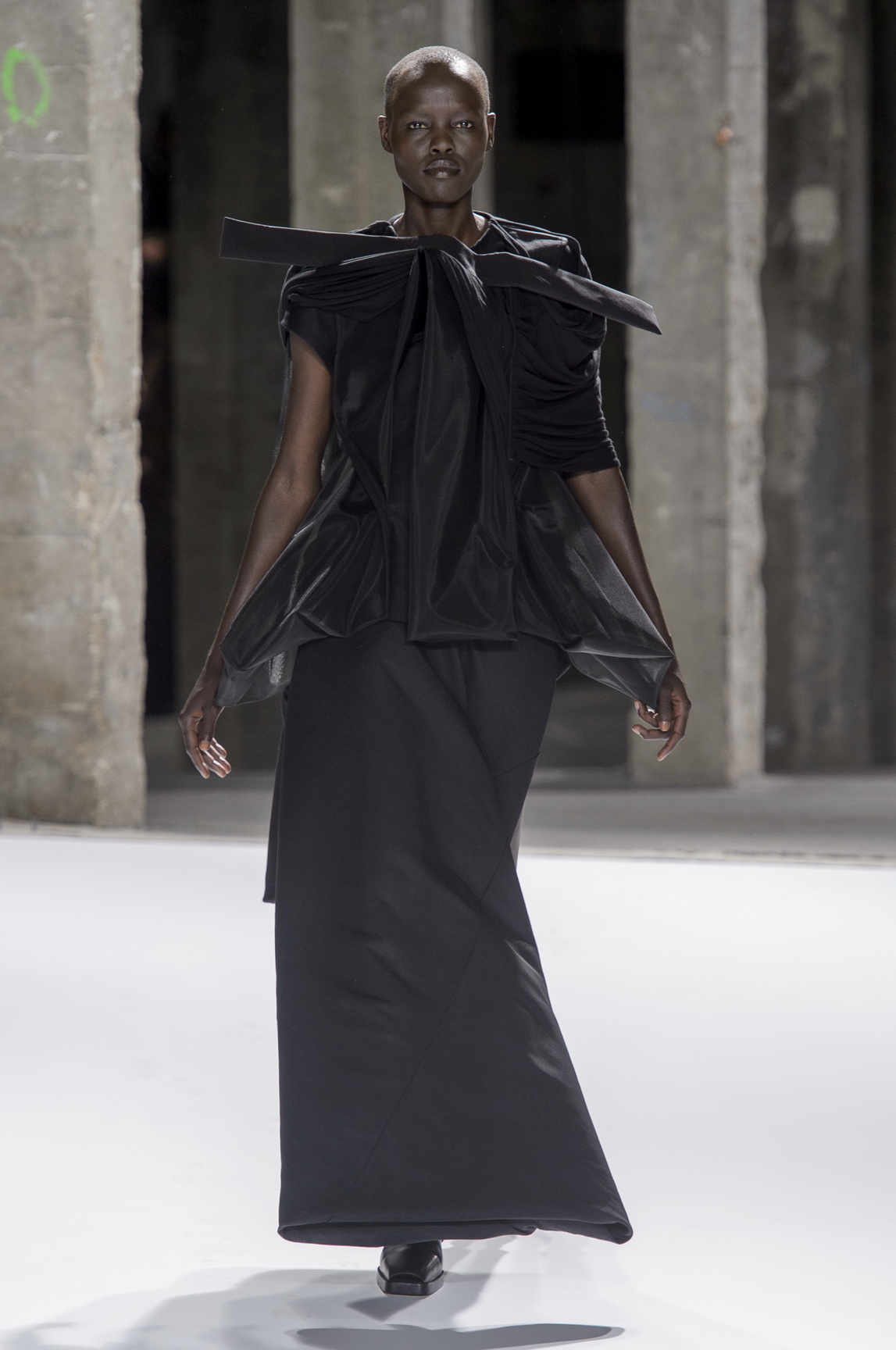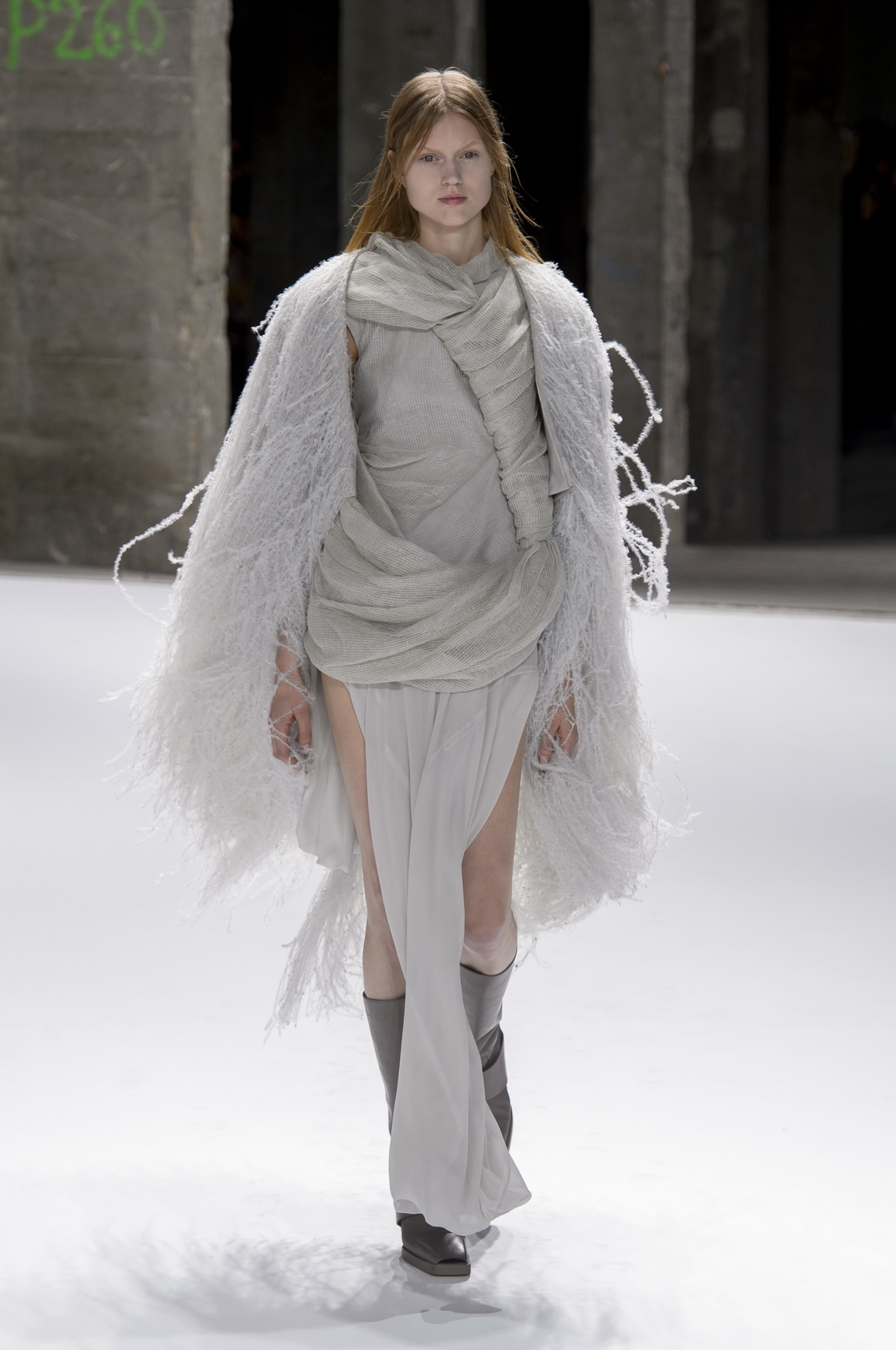There was a whirlpool on the invitation to Rick Owens’ spring/summer 17 show on Thursday at Palais de Tokyo. A menacing image, it served as a foreshadowing of things to come: an apocalyptic show drawing on the thoughts of decline that have been filling the designer’s mind lately. But then, that’s not what happened. With its raspy frailty, Nina Simone’s “Wild is the Wind” announced the first look, a glamorous royal purple construction wrapped regally around the body in a Roman way, its nearly floor-length skirt sliced up on each side, and with a silver boot. It launched a collection of garments, which — in an alternate dimension — could be described as ball gowns: grand, majestically colored structures, some with magnificent feather capes, others golden yellow like the sunrise embellishment that ornamented parts of the collection. Or was that sun setting? Owens spent July and August in his new summer residence on the Lido, swimming in the Adriatic Sea and watching the sun go up and down over its Venetian horizon. Isolated in reflective solitude, he thought about the world, his own and the one that surrounds him, about life and death and how to deal with the inevitable decline we all experience.

“I’ve been thinking about evolution: evolution of fashion, evolution of humanity,” he said after the show. “Whirlpools kind of represent decline, and I think about decline a lot, in ecological terms and certain other ways. As I’m getting older you just automatically think about decline. The creative act is the opposite of decline and the opposite of death, and I’m always kind of conscious that this is why you do it. Decline can have negative connotations; a whirlpool can be about a downward spiral. But maybe it’s just a portal to something else? I like the idea of finding a positive resolution to the idea of decline. Decline is evolution.” Perhaps the sun really was rising in those embellishments. His collection was an emotional, highly elegant reaction — if not an answer — to the reality of our decline, from the aging we can’t escape to the more concrete social and political threats that affect us all and can seem like the end of the world: terror, wars, pollution, the election next month. Owens’ work is always affected by what’s going on around him. This season, his fears were expressed in the fragile, decadent beauty of those ravishing garments.

“It was dainty. Delicate,” he said. “I always think about Parisian confection because as an American having admired Paris from afar and not expected to find myself living here, I see that what I’ve been doing in clothes, a lot of it is an American interpretation of European complexity. I like reducing things. I like getting to the point, but I do admire those layers so I’m kind of combining the two and reducing European complexity to a cartoon version of it sometimes. I’m not saying I’m embarrassed about that — that’s kind of my shtick — but it creates something else, which is nice.” Over the past years, Owens’ work has felt decidedly couture. His creative expression has evolved into something so refined that those coveted leather jackets that made him part of the fashion establishment now belong a different world within his universe. This collection was another step towards a new Rick Owens, who seems to know no boundaries in his creation. “I’m usually too practical to allow myself to do anything that frothy, but I kind of allowed myself this time,” Owens explained.

“My things are usually really solid and this time they were almost floating. It was barely stitched on. I really don’t know why it came out. I don’t know how it’s gonna work in a store — how we’re gonna shape stuff, but we’ll worry about that later,” he shrugged. As the soundtrack shifted to David Bowie’s version of “Wild is the Wind,” Owens came out to take his bow, Bowie’s haunting and passionate scream backing up his sentiment so brilliantly: “You’re spring to me, all things to me. Don’t you know, you’re life itself!” For Owens, these shows really aren’t about numbers and figures — they’re seasonal therapy: the world’s best-dressed support group for the expression of personal fears and desires. And that doesn’t just make him fashion’s best therapist, but one of its finest and most honest human beings, too.
Credits
Text Anders Christian Madsen
